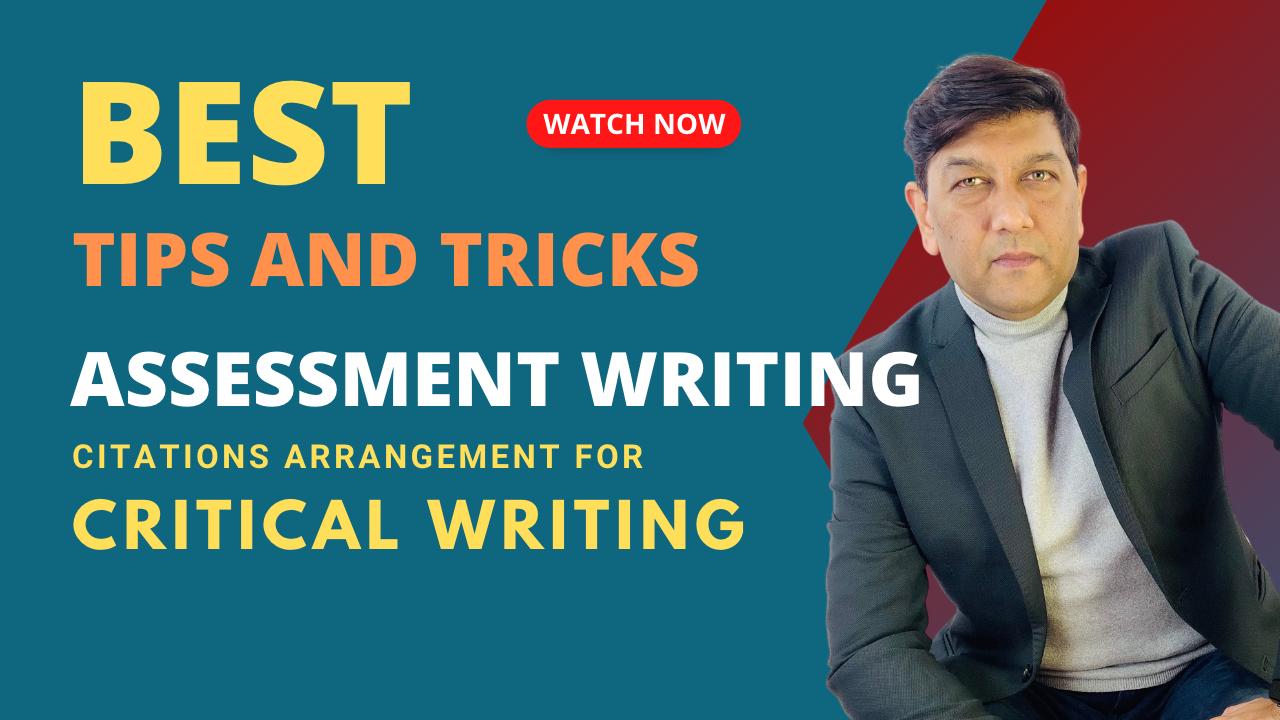Critical Analysis Guide: Mastering the Art of Critical Analysis with Citations and Referencing
Welcome, fellow readers, to this comprehensive critical analysis guide on mastering the art of critical analysis. Whether you’re a student, researcher, or someone eager to enhance your analytical skills, this blog post is tailored just for you. We will explore the ins and outs of writing a critical analysis, incorporating references and citations, and providing effective strategies, academic writing tips, and invaluable insights. As we embark on this journey, we will delve into the key aspects of critical analysis, starting with incorporating references.
We will uncover the importance of credible sources and how they play a pivotal role in shaping a well-rounded analysis. By learning to identify and utilize these sources effectively, you’ll gain the confidence to create insightful and compelling critical analyses.
Throughout this guide, we’ll address the common pitfalls often encountered in critical analysis and provide the necessary tools to avoid them. We’ll share tips on analyzing academic references, ensuring you go beyond surface-level statements and truly evaluate multiple viewpoints. Furthermore, we’ll unveil various effective strategies to elevate your critical analysis.
These strategies will empower you to explore similarities, differences, and surprising findings, all while considering various perspectives. By the end, you’ll have the skills to craft a well-structured and thought-provoking critical analysis. So, whether you’re faced with an academic assignment or seeking to enhance your critical thinking abilities, this comprehensive guide has you covered.
Join us as we unlock the secrets to writing a stellar critical analysis, empowering you to express your ideas with clarity, depth, and confidence.
Stay tuned for upcoming sections where we’ll dive deeper into incorporating references, understanding credible sources, and exploring effective strategies. Let’s embark on this exciting journey together as we unlock the art of critical analysis!
Start with this video:
When writing a critical analysis, it’s crucial to approach the task with thoroughness and attention to detail. In this comprehensive guide, we will explore the process of writing critical analysis and provide valuable insights on tackling the challenges involved. We will cover topics such as collecting references, incorporating them effectively, and addressing common issues students face. Following the strategies outlined in this guide can enhance your critical analysis skills and produce high-quality academic writing.
Collecting References: Choosing Credible Sources
The first step in writing a critical analysis is collecting references. It is essential to focus on legitimate sources of information that ensure credibility and accuracy. Some examples of reliable sources include peer-reviewed journals, published books, government websites, and professional body websites like PSRBs (e.g., APM, CIPS). On the other hand, it is advisable to avoid sources such as Wikipedia, random blogs, or websites like Quora, as they lack legitimacy.
Incorporating References: Avoiding Common Pitfalls
Once you have compiled your list of references, the next step is incorporating them effectively into your writing. However, there are common pitfalls that students should be aware of. One common issue is relying on a single citation to support an argument. This approach lacks depth and fails to explore the range of information available on the topic. It is important to consider multiple viewpoints and present a well-rounded evaluation. Another pitfall is providing a list of citations without critically analyzing the information. Simply presenting a sequence of statements with corresponding citations does not constitute a comprehensive critical analysis. To address these challenges, it is crucial to consider effective strategies for incorporating references into your writing.
Effective Strategies for Incorporating References
To ensure a balanced and comprehensive critical analysis, consider the following strategies for incorporating references:
- Determine the appropriate citation style: Before diving into the writing process, it’s important to determine the preferred citation style for your assignment. Consult your assessment brief or tutor for guidance.
- Avoid excessive use of quotation marks: While citations are essential, excessive use of quotation marks can detract from the flow of your academic writing. Use quotation marks sparingly, focusing on key terms or concepts that must be preserved verbatim.
- Incorporate multiple in-text references: Instead of relying on a single citation, incorporate multiple references to support your point. You demonstrate a thorough exploration of the topic by presenting a range of perspectives.
- Strike a balance: Avoid overloading your writing with excessive in-text citations. Select the most relevant and significant citations that support your arguments. Quality and relevance should guide your selection process.
Conclusion
Writing a critical analysis requires careful consideration of the references you include and how you incorporate them into your writing. Following the strategies outlined in this guide, you can clearly understand which sources support each argument and present a balanced analysis. Remember to avoid common pitfalls, such as relying on a single citation or presenting a list of citations without critical analysis. You can enhance your critical analysis skills and produce well-rounded academic writing with practice and attention to detail.
FAQs
- Q: How can I ensure the credibility of my sources when collecting references?
- A: Focus on legitimate sources such as peer-reviewed journals, published books, government websites, and professional body websites. Avoid unreliable sources like Wikipedia, random blogs, or websites like Quora.
- Watch: Finding Genuine Articles in the Library for Assessment and Dissertation | Simple Search Strategies
- Q: Should I rely on a single citation to support my argument in a critical analysis?
- A: It is best to incorporate multiple references to present a well-rounded evaluation. Relying on a single citation may lack depth and exploration of the topic.
- Watch: Referencing and Multiple Citation in Critical Writing and Developing an Argument for Assessment
- Q: How can I strike a balance with in-text citations in my critical analysis?
- A: Avoid overloading your writing with excessive in-text citations. Select the most relevant and significant citations that support your arguments.
- Q: What should I consider when determining the appropriate citation style for my assignment?
- A: Refer to your assessment brief for guidance or consult your tutor to clarify the preferred citation style.
- Q: How can I avoid the excessive use of quotation marks in my critical analysis?
- A: Use quotation marks sparingly, focusing on key terms or concepts that must be preserved verbatim. Excessive use can disrupt the flow of your writing.
- Q: How are references different from citations?
- A: Read more on the difference between Citations, References and Bibliography
- What is the Cosmic Algorithm?Understanding the Cosmic Algorithm: A Path to Unprecedented Business Growth In the ever-evolving world of business, achieving rapid and sustainable growth requires a blend of modern management techniques, innovative approaches, and scientific principles. Enter the Cosmic Algorithm, a revolutionary concept developed by Dr. Mandeep C Saini. This groundbreaking technique seamlessly integrates modern business education withWhat is the Cosmic Algorithm?
- How Humans Beat AI? Industry 5.0How Humans Beat AI? Embracing the Human Touch in Industry 5.0 As we venture deeper into the Fourth Industrial Revolution, characterized by the fusion of AI, robotics, and other digital technologies, a new narrative is emerging: Industry 5.0. This evolution isn’t about replacing humans with technology; it’s about augmenting human capabilities, emphasizing the value ofHow Humans Beat AI? Industry 5.0
- Applying AI in Everyday LifeArtificial Intelligence (AI) is no longer just a buzzword or a futuristic concept; it has seamlessly integrated into our daily lives, revolutionizing the way we live, work, and interact. From simplifying tasks to providing personalized experiences, AI’s impact is profound and far-reaching. In this blog post, we’ll explore how AI is applied in everyday life,Applying AI in Everyday Life
- Artificial Intelligence in business for individual productivityWelcome to the digital forefront where Artificial Intelligence (AI) reshapes the way we work, learn, and solve challenges. At mandeepsaini.com, under the guidance of Dr. Mandeep Saini, a distinguished expert in supply chains, procurement, and project management, we delve into the world of AI, demystifying its complexities and exploring practical applications. This blog post, offersArtificial Intelligence in business for individual productivity
- Inventory Types and Demand Management in Global Supply ChainsInventory Types and Demand Management In the complex global supply chain management world, understanding the nuances of inventory types and demand management is crucial for businesses seeking to streamline operations and reduce costs. This blog post delves into the vital aspects of inventory management, shedding light on strategies and tools essential for minimizing inventory withinInventory Types and Demand Management in Global Supply Chains









